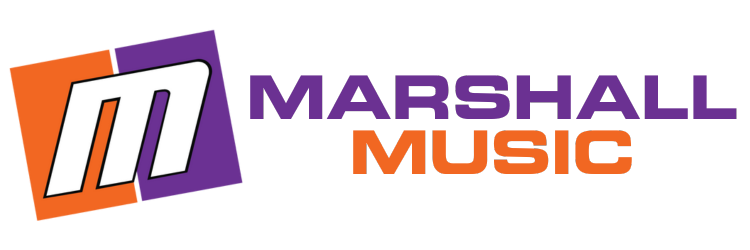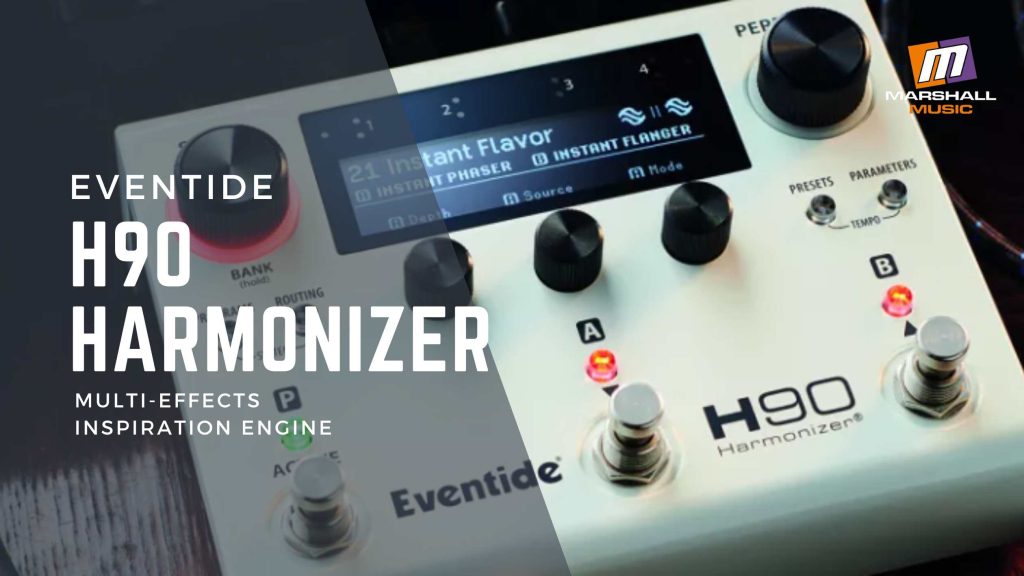The day Eventide released the diminutive multi-effects pedal, the H9, few would’ve foreseen the impact the white stompbox would have. For something so small, the little pedal could hold a raft of Eventide’s effects history and so would become a staple in live setups and DAWless jams everywhere.
Such was its popularity that we’d often spot producers and musicians rocking not one, but two H9s on stage and in the studio. This might’ve had something to do with Eventide’s R&D in the follow-up H90.
While the biggest difference with this newest offspring of the H9000 Harmonizer is, undoubtedly, the ability to run two algorithms at once, the H90 is more than just some H9s squished together.
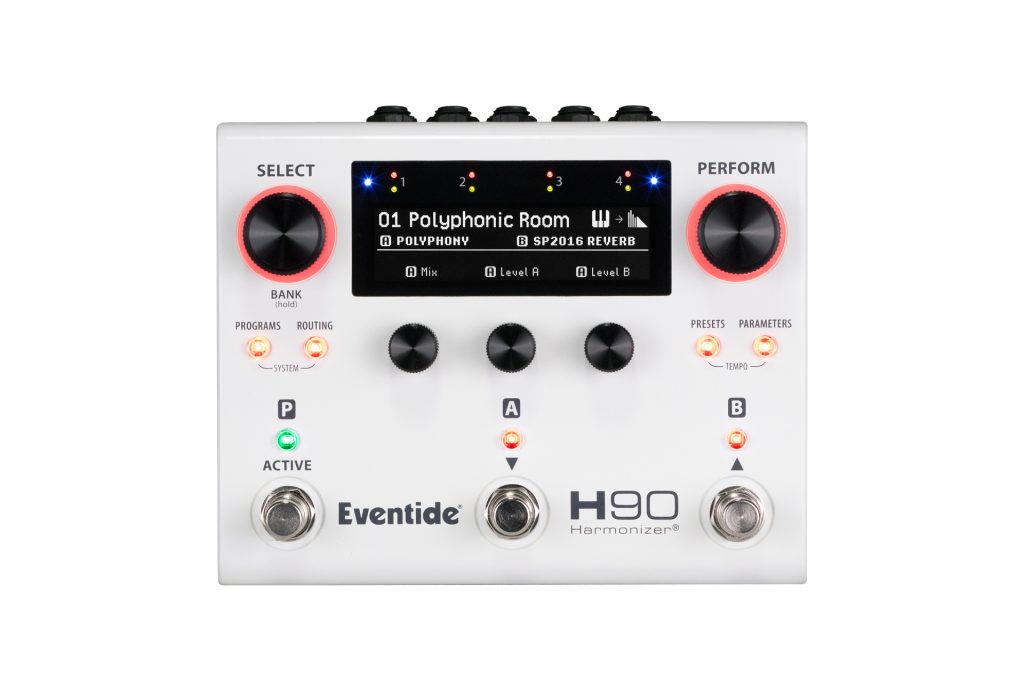
To achieve this, Eventide has gone deep under the hood, with the unit now powered by an ARM-based architecture compared to H9’s SHARC-based processing. This has led to Eventide refining all the existing algorithms as well as creating brand new ones.
The unit itself is the same rugged metal chassis, finished in white, but with double the algorithms comes double the control, screen real estate and I/O. In a nutshell, this is a whole lot more pedal than the H9, but it’s worth mentioning that it’s not replacing the H9, just adding to the Harmonizer family in general.
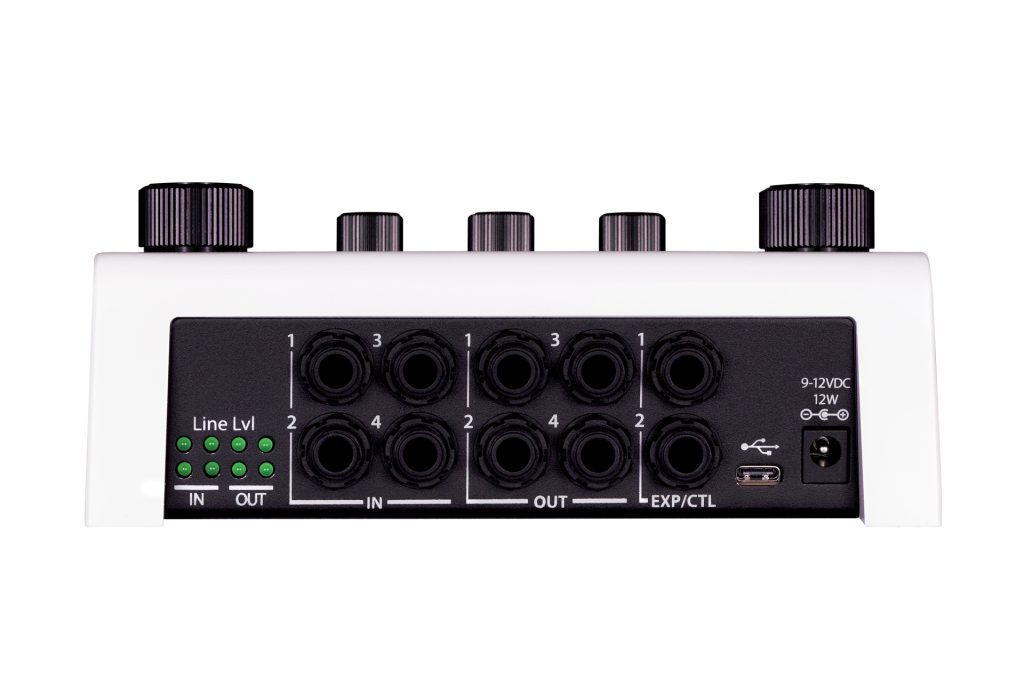
Unlike the H9, the H90 is rammed to the gills with algorithms straight out of the box, so no “core” version with the option of buying more algorithms here; this is the H9 Max and then some.
That ‘some’ happens to be 10 brand new algorithms, a portion of which are modelled on previous Eventide gear. Anyone familiar with Eventide’s rich history will know exactly what to expect, sonically. Those out there who might not be as well-versed need not worry as Eventide’s experience in spatial effects is second to none.
The new effects are as sublime as you’d expect with a mixture of classics such as the SP2016 Reverb, Instant Flanger and Instant Phaser from the back catalogue and effects such as Polyphony and Prism Shift that are really making the most of all that new-found DSP power.
The interface is adorned with three footswitches that can turn their hand to a number of functions depending on the mode selected. Within Perform mode, they can be assigned to different parameters, while the Bank mode can cycle up and down through the menu system of Programs.
Much like the H9, there are also corresponding LED buttons with the same functionality, perfect for desktop use. The H90 is also sporting five rotary dials for even more hands-on capabilities. The three smaller dials below the screen are contextual and make tweaking parameters an absolute cinch. As is the search functionality, which allows sifting through over 60 algorithms a far smoother prospect.
There’s a big focus on performance with the H90 featuring the Perform Hot Knob, similar to that found on the H9. The Hot Knob harnesses the power of multiple effects parameters within one rotary. In this mode, the six switches are also assigned multiple performative functions. Each Program will have a different set of parameters assigned to each physical control depending on the algorithm used.
Exploring these features and even mapping your own is quite fiddly with available screen real estate, but much like the H9, Eventide has created the H90 Control app for easy access to all the parameters and controls, which we found to be an essential companion to the H90’s workflow.
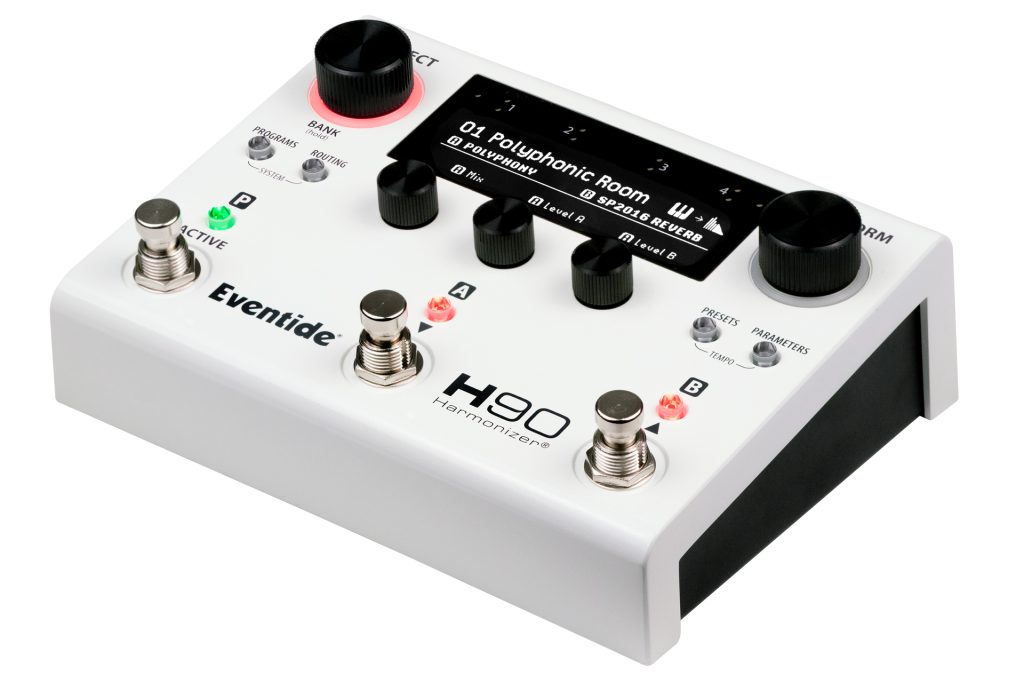
The H90 can handle a multitude of scenarios. For guitarists, you have the option to run in a basic effects chain setup or use the four-cable method. This Single mode also accommodates a stereo input. Switch the unit into Dual mode and you can process two stereo signals at once, perfect for adding two insert effects into your DAW setup or running the unit as a pre/post amplifier.
In either Single or Dual modes, you can easily switch between running both algorithms in series or parallel. However, in Dual mode, you can also select where within the signal chain you want to add insert effects.
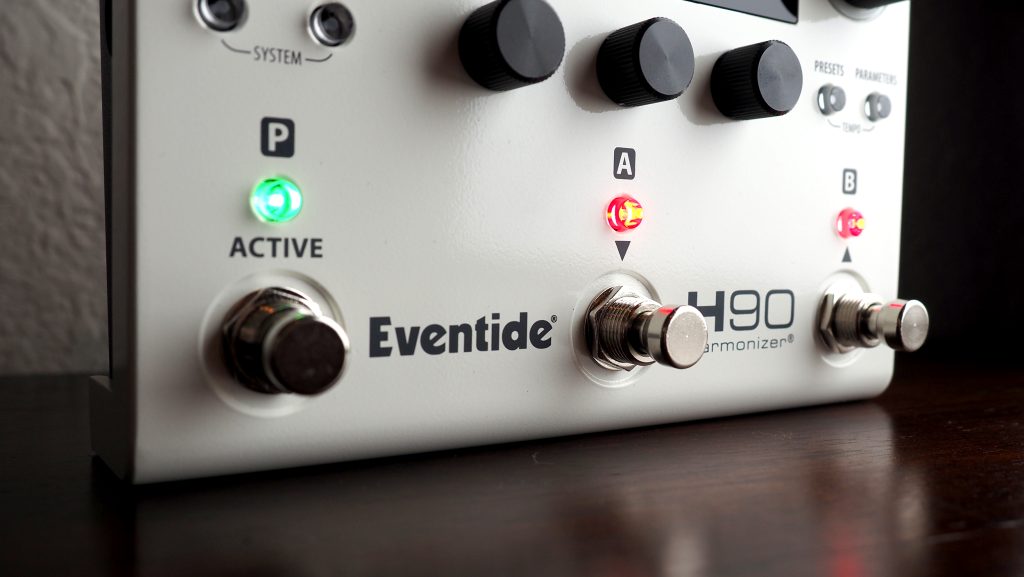
Eventide’s rich history of effects is on full display here, some old, some new, and playing with two algorithms simultaneously opens up a world of possibilities in sound-mangling.
You’ll find some algorithms work better in certain situations than others, but that’s just the tip of the iceberg and finding out is half the fun. The amount of options here is staggering and certainly adds to the value of a pedal, which let’s face it, is probably not on a lot of people’s shopping lists due to its lofty price. However, it blows its smaller brother out of the water in every way, so we feel the price tag is more than justified.
Its power and signal routing flexibility offer producers and guitarists so much that you’d want to use this on every project, be it live or in the studio.
It’s intuitive, with plenty of control even before you deploy the H90 Control app. And you will, as there seems to be one glaring omission to all this flexibility: the inability to switch the order in which the algorithms are deployed, other than by manually changing slots A and B around on the unit itself. A bit laborious, but only a minor gripe.
Eventide rightly calls the H90 an ‘inspiration engine’; it takes you on a journey through time and space, and who knows where you’ll end up?
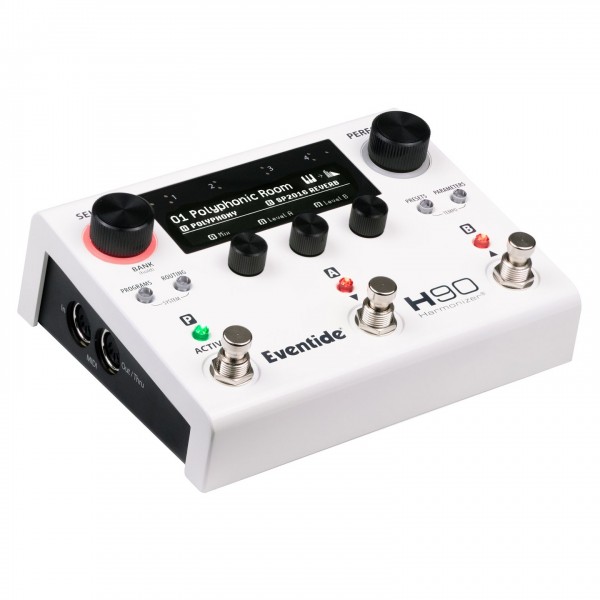
Eventide H90 Harmonizer Multi-effects Pedal
Multi-effects Pedal with 62 Algorithms, MIDI In/Out/Thru, USB Functionality, Software Editor, Tap Tempo, 2 Expression Inputs, and Tuner
Enquire for Availability & Updated Price
-
Product on sale
 Eventide TriceraChorus Tri-chorus PedalOriginal price was: R6,725.00.R5,249.00Current price is: R5,249.00.
Eventide TriceraChorus Tri-chorus PedalOriginal price was: R6,725.00.R5,249.00Current price is: R5,249.00.1 in stock
-
Product on sale
 Eventide MicroPitch Delay PedalOriginal price was: R6,725.00.R5,895.00Current price is: R5,895.00.
Eventide MicroPitch Delay PedalOriginal price was: R6,725.00.R5,895.00Current price is: R5,895.00.1 in stock
-
Product on sale
 Eventide H9 Max Multi-effects PedalOriginal price was: R16,065.00.R13,799.00Current price is: R13,799.00.
Eventide H9 Max Multi-effects PedalOriginal price was: R16,065.00.R13,799.00Current price is: R13,799.00.2 in stock
-
Product on sale
 Eventide Space Reverb PedalOriginal price was: R13,405.00.R12,065.00Current price is: R12,065.00.
Eventide Space Reverb PedalOriginal price was: R13,405.00.R12,065.00Current price is: R12,065.00.1 in stock
-
Product on sale
 Eventide Rose Delay Effect PedalOriginal price was: R9,385.00.R8,119.00Current price is: R8,119.00.
Eventide Rose Delay Effect PedalOriginal price was: R9,385.00.R8,119.00Current price is: R8,119.00.1 in stock
-
Product on sale
 Eventide PowerMAX V2 7-Pedal Universal Power SupplyOriginal price was: R6,895.00.R5,995.00Current price is: R5,995.00.
Eventide PowerMAX V2 7-Pedal Universal Power SupplyOriginal price was: R6,895.00.R5,995.00Current price is: R5,995.00.6 in stock
-
Product on sale
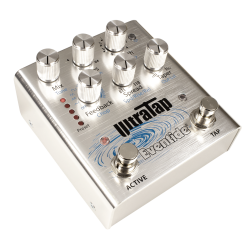 Eventide UltraTap Multi-Tap Effects PedalOriginal price was: R6,725.00.R6,055.00Current price is: R6,055.00.
Eventide UltraTap Multi-Tap Effects PedalOriginal price was: R6,725.00.R6,055.00Current price is: R6,055.00.Enquire for Availability & Updated Price
-
Product on sale
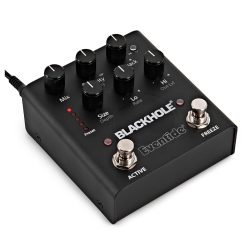 Eventide Blackhole Reverb PedalOriginal price was: R6,725.00.R6,055.00Current price is: R6,055.00.
Eventide Blackhole Reverb PedalOriginal price was: R6,725.00.R6,055.00Current price is: R6,055.00.Enquire for Availability & Updated Price
Original review from Music Radar
